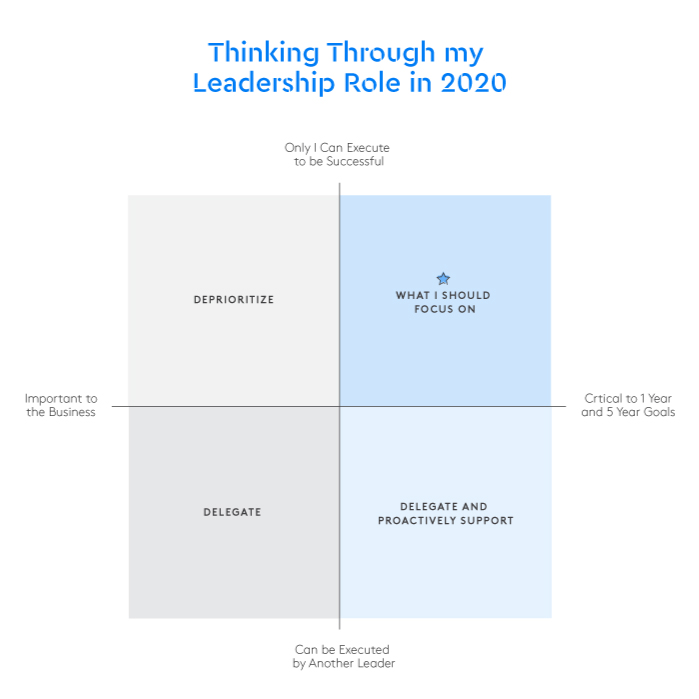
Share this Post
PUBLISHED
January 9, 2020
WRITTEN BY
Adrian Bartha
Happy 2020!
The holidays are a wonderful time to be with family, catch up with old friends and indulge in more great home cookin’. As much as we need to “switch off” and relax, most c-suite leaders can’t help be somewhat reflective in the year past and what the year forward holds in store for us. It’s not like the planning didn’t already begin months ago but come January now it’s starting to feel more real isn’t it?
It was probably four years into building our company that I was introduced by a fellow c-suite leader to a framework for reflecting. For someone who came to be most comfortable with an “old school” leadership style, I was reluctant at first to explore this mushy stuff. I’ve always like planning and taking action but deliberately reflecting seemed to exercise a different muscle… but quickly came to embrace it.
Firstly, Presidents, business owners and leaders in the c-suite are so bombarded with information, decisions, and meetings in any given day that it’s very difficult to pull away and reflect on what really happened and what it means for us and our organizations. AKA “So what?”. Further, we’re so used to “taking action” that any exercise that doesn’t immediately lend itself to that seems unproductive. If the holidays or beginning of a new year (and new decade) is as good of a time as any, then how can we do this in a way that is productive (not just sentimental)?
A simple framework for reflection
How to figure out what is most important … for you?
We can all prioritize and make lists. Long term, short term, critical, lower priority and so on. But how can we find out what really matters to us as leaders? I don’t have a viewpoint on this, but I will share below what I do as the next step. The one framework I keep coming back to looks something like this:

I like it because it forces me to disaggregate not only what is important (vs. not) but what I must personally focus on to advance the organization vs. empower other leadership team members to own. It has pushed me to let go of some things I held on too long, but also double-down on things that critical to our success: things where 80% confidence is not enough. For things that only I can do but are being deprioritized, it forces me to ask whether I have the right leadership team configuration or any leadership gaps. Very few things should be 100% dependent on just ourselves and we should be constantly pushing to “put ourselves out of a job” (figuratively speaking).
While these techniques may be very personal, you probably get the idea. If you’re interested in an example of the framework above, let me know and I’ll shoot you a snapshot of mine.
What do you do with the stuff that you can delegate and how do you think about your leadership team? This Situational Leadership Framework is not new but has been a helpful reminder as I think through leaders at various levels of maturity and where I best intersect with each of them to get them the leadership they need most (and not the leadership style I prefer to give).
Building a new routine of reflective thinking
Some business leaders like Warren Buffet have found simple ways to ensure they are always thinking about what is most important + generating truly new ideas (even if they come around rarely). Buffet used to reserve time in his calendar for an all-day “Haircut” as his way of finding an excuse to think on critical things. It became a running joke between him and his business partner Charlie Munger. The book written by an early mentor and investor of ours called Outsiders: Eight Unconventional CEOs goes further: “[Buffet] prides himself on keeping a blank calendar, devoid of regular meetings”. Perhaps this is one reason Buffet is able to write such thoughtful investor letters?
Personally, I’ve found it difficult to NOT be the crazy busy leader but it’s one of my 2020 goals to spend more flexible time on what is most important and learn from the greats.
Signing off and wishing you the best for what is hopefully another set of the Roaring Twenties…we wish you and your team success in 2020.
Rethinking Safety
Drive employee engagement by connecting
your frontline to your boardroom.
How Turner Construction improved worker participation by working on continuous improvement
READ CASE STUDY